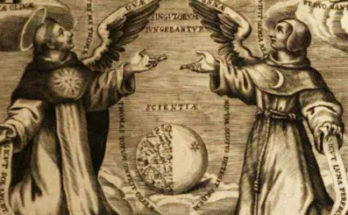Continue to article page to display article full-text.
There are many ways how to measure distances to astronomical objects. The most straightforward method is purely geometric: as the Earth orbits around the Sun, the angle at which we view the closest stars slightly changes. The closer stars appear to move more than the stars which are farther away. This change in the viewing angle is called parallax. However, this method is not practical when applied to distant objects. When we look at the night sky, we notice that not all stars have the same brightness. Some of the stars change their brightness in time and we call them variable stars. There are various reasons for these variations, but we are interested in stars, which periodically pulsate and get hotter and cooler in cycles. In the early 20th century, it was noticed that there exists a type of giant star, whose period of pulsation can be linked to the amount of light they physically emit. You can imagine that you could tell the distance to a candle based on how bright its flame appears. Similarly, you can measure the distance of these giant pulsating stars called Cepheids. This is how we discovered that the Milky Way is not the only galaxy in the universe. This work focuses on the smaller siblings of the Cepheid stars, called delta Scuti stars. Their pulsations are more complicated and less reliable than those of the Cepheid variable stars but are much more frequent and easier to measure. Delta Scuti stars are also considerably more abundant in the Universe, and therefore their study is of some value.
 Marco Souza de Joode is a first-year student of physics at the Faculty of Mathematics and Physics at Charles University, currently living in Prague. During the last seven years, he has worked in several areas of astronomy. Research outputs of his high school works in the field of variable stars won the award of the Czech Learned Society and are now published in international journals. His work on modelling the shape of asteroids won the first prize in national competitions and received the Czech heads (“České hlavičky”) award. His work contributed to the functioning of the new Solar optical flare spectrometer at the Astronomical Institute of the Academy of Sciences, and this work was also awarded several prizes. He co-wrote software for the control of two large (7.5 and 10 meter) solar radio telescopes at the Astronomical Institute. During his high school years, Marco Souza de Joode participated in International Astronomy Olympiads (in China, Sri Lanka, Hungary and Colombia) and won four silver medals. Now he helps organize Czech Astronomy Olympiad, as well as the Physics Seminar by correspondence for younger students. Marco Souza de Joode is also an author of several online educational resources and physical replicas of ancient astronomical instruments, which he sells at the Prague observatory, where he also works part time.
Marco Souza de Joode is a first-year student of physics at the Faculty of Mathematics and Physics at Charles University, currently living in Prague. During the last seven years, he has worked in several areas of astronomy. Research outputs of his high school works in the field of variable stars won the award of the Czech Learned Society and are now published in international journals. His work on modelling the shape of asteroids won the first prize in national competitions and received the Czech heads (“České hlavičky”) award. His work contributed to the functioning of the new Solar optical flare spectrometer at the Astronomical Institute of the Academy of Sciences, and this work was also awarded several prizes. He co-wrote software for the control of two large (7.5 and 10 meter) solar radio telescopes at the Astronomical Institute. During his high school years, Marco Souza de Joode participated in International Astronomy Olympiads (in China, Sri Lanka, Hungary and Colombia) and won four silver medals. Now he helps organize Czech Astronomy Olympiad, as well as the Physics Seminar by correspondence for younger students. Marco Souza de Joode is also an author of several online educational resources and physical replicas of ancient astronomical instruments, which he sells at the Prague observatory, where he also works part time.




